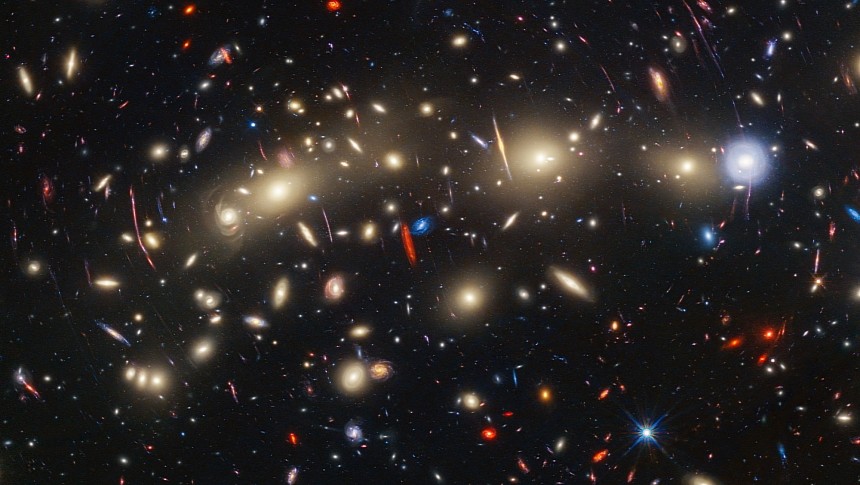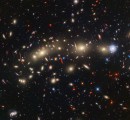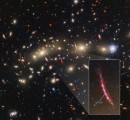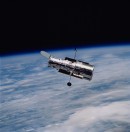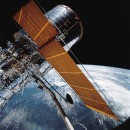It's easy to get the impression that NASA's James Webb Space Telescope was built to outright replace what's perhaps history's most important space telescope, the Hubble Space Telescope. But because JWST operates primarily on the infrared side of the electromagnetic spectrum while Hubble focuses on the visible light side of things, the truth is the two space probes act more like a tag team than a distinct line of succession from one to the other.
The result is that sometimes, the two probes come together to make spectacular compound photos like the one before us here. Through depicting the far-off MACS0416 galaxy cluster from 4.3 billion lightyears away, Hubble and JWST proved that even the finest space telescope can get a boost from the established old guard once in a while. From their vantage point in low-Earth Orbit and near the L2 LeGrange point, respectively, America's two most famous space telescopes combined to create an image that defies belief.
From their safe vantage points, Hubble and JWST were able to capture the convergence of two smaller galaxy clusters in this region of the cosmos that, one day, will likely violently combine into a single entity held together by the collective gravity of all the objects within its sphere of influence. Being so many billions of lightyears away from Earth makes calculating the exact date these galaxy clusters become hard to say. But one thing's for sure, watching the proverbial NASCAR crash of so many galaxies converging on each other about to take place is nothing short of an EDM light show in the cosmos.
Through the meticulous batch rendering of each telescope's images before layering each image and adjusting the opacity accordingly, what results is a delightful mix of bright red and blue galaxies mixed in with glowing amber stellar masses many light years across each. Indeed, the specific color signatures emitted by each cosmic mass tell a great deal about its nature, its makeup, and the path each object could take in the future. Objects in blue tend to be in the foreground of the image, closer to Hubble and JWST's sensor arrays, based on its relatively short wavelength, easily detectable through Hubble's instruments.
Meanwhile, red images farter into the background of the image and, obscured by masses of stellar dust, fall right into the wheelhouse of the grandest infrared space telescope ever devised by humans, JWST. It's only when both images are processed and layered, as explained above, that a proverbial Fourth of July fireworks compound image brings into view the holistic totality of what exists in this far-off region of the cosmos. Safe to say, this probably won't be the last time America's two most famous telescopes work together.
From their safe vantage points, Hubble and JWST were able to capture the convergence of two smaller galaxy clusters in this region of the cosmos that, one day, will likely violently combine into a single entity held together by the collective gravity of all the objects within its sphere of influence. Being so many billions of lightyears away from Earth makes calculating the exact date these galaxy clusters become hard to say. But one thing's for sure, watching the proverbial NASCAR crash of so many galaxies converging on each other about to take place is nothing short of an EDM light show in the cosmos.
Through the meticulous batch rendering of each telescope's images before layering each image and adjusting the opacity accordingly, what results is a delightful mix of bright red and blue galaxies mixed in with glowing amber stellar masses many light years across each. Indeed, the specific color signatures emitted by each cosmic mass tell a great deal about its nature, its makeup, and the path each object could take in the future. Objects in blue tend to be in the foreground of the image, closer to Hubble and JWST's sensor arrays, based on its relatively short wavelength, easily detectable through Hubble's instruments.
Meanwhile, red images farter into the background of the image and, obscured by masses of stellar dust, fall right into the wheelhouse of the grandest infrared space telescope ever devised by humans, JWST. It's only when both images are processed and layered, as explained above, that a proverbial Fourth of July fireworks compound image brings into view the holistic totality of what exists in this far-off region of the cosmos. Safe to say, this probably won't be the last time America's two most famous telescopes work together.
